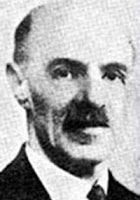Two Factor Theory of Intelligence:
The two factor theory of intelligence
was proposed by Charles Spearman
(1927). According to him, intelligence consists of general (g) and specific (s)
factor.
The theory maintained that all
intellectual activities share a single common factor (called “g”) which is
characterized as mental energy. “g” is considered responsible for relationship
between different human activities. Positive correlations between any two
factors were attributed to ‘g” factor.
In addition to “g”, this theory also
postulates a number of specific factors “s”. Each specific factor is strictly
specific to a single activity.
Theory of Multiple Intelligence:
The theory of multiple intelligence
was proposed by Howard Gardner. According to this theory, intelligence is not a
single entity; rather distinct types of intelligence exist. Each of these
intelligences is independent of each other. This means that if a person
exhibits one type of intelligence, it does not necessarily indicate being high
or low on other types of intelligence.
Gardner also said that different
types of intelligence interact and work together to find a solution to a
problem. Gardner studied extremely talented persons, who had shown exceptional
abilities in their respective areas and described eight types of intelligence.
These are the following:
- Linguistic: It is a kind of skills involved in the production and use of language. It is related to reading, writing, listening, talking, understanding, etc. This is the capacity to use language fluently and flexibly to express one' thinking and understand others. Persons high on this intelligence are word-smart. Such people are sensitive to different shades of word meanings, articulate and can create linguistic images in their mind. For example, poets and writers are very strong in this component of intelligence.
- Logical Mathematical: This type of skills is in scientific thinking and problem solving. It is type of intelligence which deals with abstract reasoning and manipulation of symbols involved in numerical problems. Person high on this type of intelligence can think logically and critically. It is exhibited in scientific work, for example, scientists and Nobel Prize winners are likely to be strong in this component of intelligence.
- Spatial: The skills which are used in forming visual images and patters. This kind of skill is used in intelligence which is used while navigating in space, forming, transforming and using mental images. The person high on this intelligence can easily represent the spatial world in the mind. Pilots, sailors, sculptors, painters, architects, interiors decorators and surgeons are likely to have developed spatial intelligence.
- Musical: This type of intelligence gives sensitivity to musical rhythms and patterns. It is the capacity to produce, create, and manipulate musical patterns. Persons high on this intelligence are very sensitive to sounds and vibrations and in creating new patterns of sounds; for example, singers are likely to be strong in this components.
- Bodily Kinesthetic: In this type of intelligence, the whole or portion of the body is used flexibly and creatively. This consists of the use of the whole body or portion of it for display or construction of products and problem solving. It requires the skills and dexterity for fine coordinated motor movements such as those required for dancing, athletics, surgery, and craft making.
- Interpersonal: It is the sensitivity to subtle aspects of other’s behaviors. This is the skill of understanding the motives, feelings and behavior of other people so as to bond into comfortable relationship with others. For example, psychologists, counselors, politicians, social workers, and religious leaders have high degree of interpersonal intelligence.
- Intrapersonal: it is an awareness of one’s own feelings, motives, and desires. This refers to the knowledge of one’s internal strengths and limitations and using that knowledge to effectively relate to others. Persons high on this ability have finer sensibilities regarding their identity, human existence and meaning of life. For example, philosophers and spiritual leaders having strong intrapersonal skills.
- Naturalistic: It is the sensitivity to the features of the natural world. It is related to recognizing the flora and fauna and making a distinction in the natural world. It is more possessed by hunters, farmers, tourists, students of biological sciences and the like.





